It seems the universal sign for meditation is a flexible person sitting in a cross-legged position with their hands in a finger touching pose. It looks beautiful and serene.
That’s not how it looks on me. If I try to sit cross-legged my hips cramp, my knees won’t go down and my ankles hurt from the pressure. I look like a twisted pretzel that won’t lay flat.
But on the bright side I can hold the finger poses easily. You may be laughing but the finger positioning is an active part of the meditation called a mudra.
Mudras are positions of the body that influence the energies of the body. There are mudras for different parts of the body, but the most common ones are done with the hands and fingers. Mudras activate certain parts of the brain and body in a way similar to reflexology, affecting mood and physical health.
The hand and finger poses make important connections in the nervous system and stimulate specific energy pathways. Used as a tool to draw you inward, mudras have been used for centuries in Buddhism. Often Buddha statues have the hands in a mudra position.
Using Mudras
To use a mudra, hold the finger-positions with both hands at the same time. The energy is more powerful with both hands than with just one hand.
Hold the mudra for at least a minute. The longer you hold the position the more effective it becomes. Try to do mudras for 15 minutes each day. You can spread that time out over the day or do it all at once as part of your meditation practice.
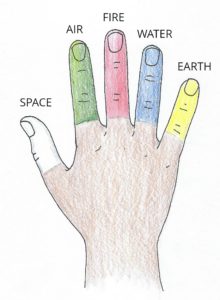
The Elements and the Hand
Traditional healers believe that all the elements are represented on the human hand. If the body needs healing they could tap into the energy of the elements by practicing suitable mudras. Once the elements are balanced the body releases the disease.
Each finger holds an energetic point for an element:
- Thumb: Space
- Index Finger: Air
- Middle Finger: Fire
- Ring Finger: Water
- Pinky Finger: Earth
Collection of Mudras
There are more than 100 recognized hand mudras. Fortunately, most people don’t need to know that many. Here are some common ones that may be beneficial for your own well-being.
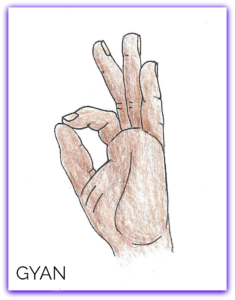
Gyan
Probably the most recognizable mudra. Often used in meditation, it helps you gain knowledge. The Gyan mudra improves concentration and sharpens memory. It helps release stress and anger, eases depression and headaches.
Method: Touch the tip of your index finger to the tip of your thumb while the other three fingers are straight or slightly bent.
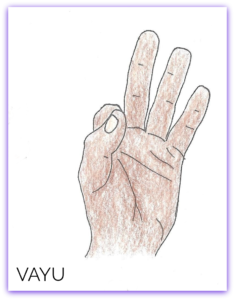
Vayu
Used for air imbalances. The Vayu mudra helps with gas related pain, flatulence, joint pain, gout and abdominal discomfort. It is also useful for arthritis and constipation.
Method: Fold your index finger into your palm and place your thumb on the knuckle of your index finger. Other fingers are straight.

Surya
Increases the fire element in the body. Surya improves metabolism and digestion, reducing heaviness in the body. It strengthens the immune system and regulates the thyroid gland.
Method: Bend your ring finger to the base of your thumb so that your thumb touches the ring finger’s knuckle. Keep other fingers straight without stressing the hand.
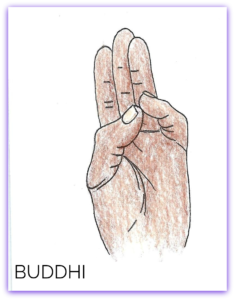
Buddhi
Used for mental clarity. Buddhi can be used to improve communication both with others and your own internal dialogue. It can help you to understand intuitive messages.
Method: Touch the tip of your pinky finger to the tip of your thumb. Hold other fingers straight.
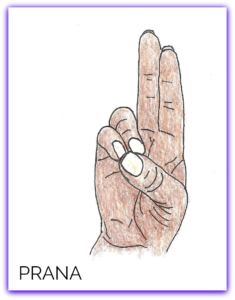
Prana
Activates energy in your body. Use whenever you feel drained or tired. Prana increases vitality, reduces fatigue and nervousness.
Method: Touch your ring and pinky fingers to the tip of your thumb. Keep other fingers straight.
Mudras can be done anywhere and don’t require any special equipment. Integrating mudras as a healing tool into your daily life will help you feel better physically and connect more deeply with your inner self and the universal energy.
